Showing 31–40 of 135 results
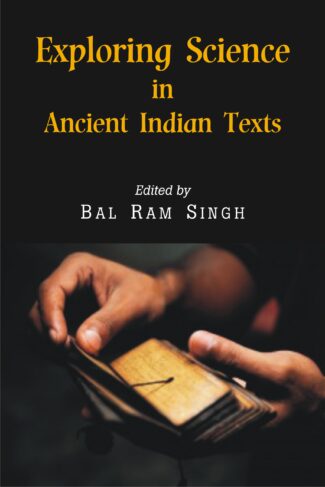
The volume is an attempt to lay down some of the fundamental principles of Vedic traditions and practices for improving the efficacy of modern science. As ancient Indian texts contain many advanced technologies and scientific developments, it is for one’s surprise that what technologies were in use and what scientific developments are relevant in our time.
Philosophical and cultural factors play a significant role in developing scientific theories and interpreting data. These factors are also influential in assessing science and technology. We experience a visible distinction in the philosophy and culture of the West and East, mainly due to geographical and climatic reasons. And this difference reflects in their approach to science and technology too. Modern science has many roots in Vedic and Upanishadic knowledge. For historical reasons or so, this has been deliberately disassociated even from the philosophical bases. Vedic traditions or dharma traditions address many a question that modern science addresses. These include the origin of matter and universe, origin of life, origin of species and evolution, state of consciousness and mind, among others.
This book addresses topics such as the basic premise of scientific approach to examine reality; mathematical and scientific knowledge, derivation, and application of Vedic perspective; and models for current scientific issues with Vedic perspective, and thus covers ideas of matter and universe, consciousness and mind, and fundamental questions of defining and applying science and scientific approaches. It also deliberates on more attractive aspects of Vedic knowledge such as Ayurveda and yoga, which are fast finding base across the globe.
The volume is an effort to lay down some of the fundamental principles of Vedic traditions and practices for improving the efficacy of modern science. As ancient Indian texts contain many advanced technologies and scientific developments, it is for one’s surprise that what technologies were in use and what scientific developments are relevant in our time.
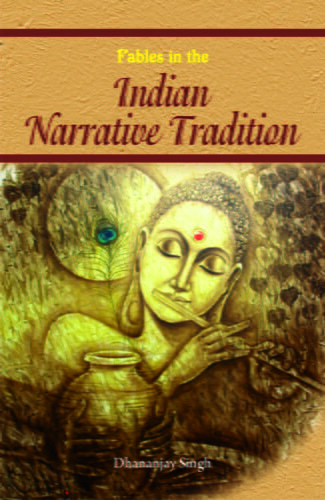
The book studies and develops an overall understanding of the Indian fables, their philosophy, mutual relationships, proliferation and textual scholarship. It also establishes the chronological development of the fables, right from the earliest utterances found in the Vedas to the epics, the Pa¤catantra and Buddhist texts.
The fable is the most metaphorical of all narrative genres. The Indian fable, being both realistic and other-worldly, is recognised as a wonderful integration of the aesthetic and the discursive. Imitating the habits, chores, beliefs of the Indian culture, it is the dominant form in texts like the Pancatantra, the Jatakas, and the Hitopadesha. It is included at different places in the long narratives of the Mahabharata and the Yogavasishtha, and is disseminated in the form of the various folktales of India. This volume explores the unique tradition of Indian fables to present a theoretical understanding and critical analysis of the various aspects of the Indian fable.
The work studies the Indian fables spread across various compositions in the context of the dominant discourses of the narratives, their form and structure and their continuing relevance. It develops an overall understanding of the Indian fables, their philosophy, mutual relationships, proliferation and textual scholarship. It also establishes the chronological development of the fables, right from the earliest utterances found in the Vedas to the epics, the Pa¤catantra and Buddhist texts. It emphasises the significance of the Indian fable as a discourse, often the narrative becoming subservient to the fables discursive function.
This interesting study will prove useful to scholars and students of Indology, particularly those concerned with Indian culture and literary tradition, as well as general readers interested in fables and stories of the Indian tradition.
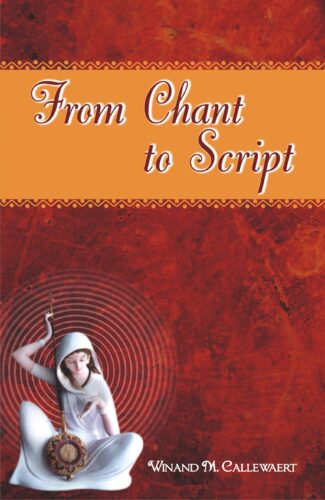
This book is an omnibus of eleven thoroughly revised articles on Nirguna Bhakti, published in the 1970s and 1980s. In order to complete the overall view of the author’s research on Nirguna Bhakti, this volume is appended with a summary of nine books published during 1989-2009.
Callewaert started to publish long before the computer age, in 1974. He sent his PhD dissertation to the press typed on paper and then revised three typeset proofs. In 2009, he sent his most recent publication to the publisher on a memory stick: 2,187 pages. Many of the early articles, especially those of the pre-computer age, may no longer be easily available and for that reason eleven articles were selected and thoroughly revised for this publication (pp. 3-169). The research career of Callewaert was at the beginning strongly inspired by F. Camille Bulcke (Ranchi) and Charlotte Vaudeville (Paris). He followed their advice and worked mainly on manuscripts with Nirguna Bhakti literature, preparing critical editions and English translations. In order to complete the overall view of this research in that area, in this book are further given a summary of nine books published in the period 19892009 (pp. 171-216) and a summary of eight articles (19962011, pp. 217-44).
During his career he has photographed many manuscripts now threatened with destruction (the result is now digitized in the University of Heidelberg Library); he has prepared critical editions and translations in collaboration with several outstanding colleagues, and he realized how wrong he was in 1971 when defining his research future: to copy as many manuscripts as possible and to reconstruct the archetype, of the original Kabir and others, after a stemmatic comparison of the manuscripts. For, scribes committed errors, intentionally or unknowingly, and variant readings, Callewaert thought, should enable a researcher to establish the relationship between the manuscripts. What eventually turned out to be a wrong methodology became a very exciting adventure, when Callewaert started to discover the singers in the manuscripts. This evolution too is discussed in the present volume, From Chant to Script.
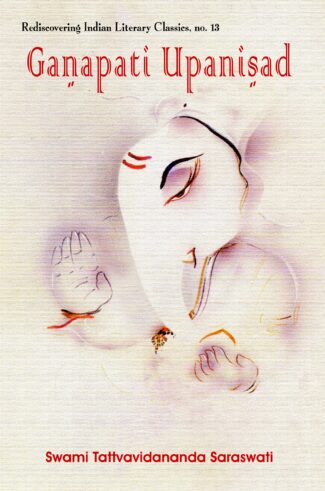
The book presents the text of the Ganapati Upanisad dealing with the worship of äsvara and revealing the nature of the ultimate Reality along with its transliteration in Roman script, followed by a detailed commentary a critical analysis on its meaning.
The Upanishads represent a glorious religious-philosophical thinking that is at the core of the Indian tradition. An important Upanishad is the Ganapati Upanishad, found in the concluding part of the Atharvaveda, which deals with the worship of ä÷vara and reveals the nature of the ultimate Reality in which everything resolves. The book presents the text of the Ganapati Upanishad along with its transliteration in Roman script which is followed by a detailed commentary on its meaning that takes up each line for critical analysis. Beginning with a general discussion on the Upanishads, their association with specific Vedas and their main purpose, Swami Tattvavidananda examines the nature of the Cosmic Power and the universe, propitiation of God, the purpose of living, concepts of ananta, ananda and others as explained in the Ganapati Upanishad. He explains the derivative roots of many words so that the concepts may be better understood by the readers. The commentary, in a language that demystifies esoteric concepts, includes many cross-references. The book will be extremely useful to scholars of Vedantic thought and Indian religious and philosophical traditions as well as general readers.
Gita Govinda, a drsya-kavya of Jayadeva, a twelfth-century Sanskrit poet, due to its deep foundations in devotion and exquisite intrinsic beauty, is the most desired in the music and dance of India. This erotic poem, through its three characters in Radha, Krsna and the sakhi, portrays physical love as a metaphor for divine longing of the individual soul to have its union with the Supreme.
The volume in hand presents the primacy of the language in linguistic and literary theories as the vehicle of thought, along with the performing arts background and technical aspects of dance that complement Jayadeva’s composition. It also deals with a setting for the Gita Govinda in terms of its historical context, time, cultural influences and relevance in the arts.
It addresses each and every verse of Gita Govinda with translation and literary notes. Also, it showcases the uninterrupted text in Devanagari along with Romanized transliteration. In a nutshell, the book brings to us a magical world of dance and music through the eyes of a Sanskrit scholar and a mature, expressive dancer in Sharda Narayanan and Sujatha Mohan, respectively.
The experiences and knowledge from our past are recorded in manuscripts which have been handed down to us over several thousand years. The Government of India, through the Department of Culture, took note of the importance of this vast tangible heritage and, in order to preserve and conserve as well as to make access to this wealth easy, established the National Mission for Manuscripts (NMM). In order to disseminate the knowledge content of manuscripts, the Mission has taken up several programmes such as lectures, seminars and workshops. The Mission has published the proceedings of the above-said programmes under the following series: “Samiksika” (on conservation), “Tattvabodha” (comprising lectures based on manuscripts delivered by eminent scholars), “Samiksika” (research-oriented papers presented in the seminars), “Krtibodha” (transcribed and edited texts prepared at advanced level manuscriptology workshops conducted by NMM) and “Prakasika” (publication of rare, unpublished manuscripts). The present work, Samiksika-16 comprises the proceedings of the conference on History and Development of Mathematics held in the Samskrita Academy, Chennai in collaboration with the National Mission for Manuscripts.
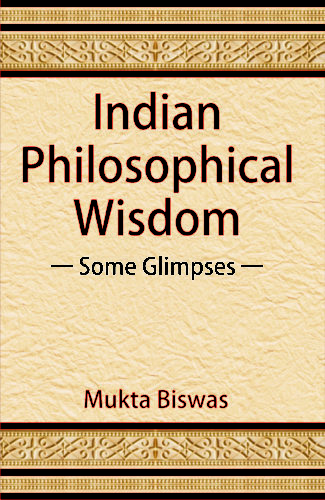
The title of the book Indian Philosophical Wisdom: Some Glimpses itself signifies its importance. Indeed, philosophy is involved in every sphere of human life — literature, creative art, culture, etc. The author in her zeal to unravel the precious accumulated wisdom of Indian philosophy delved in its treasure with different approaches — historical, analytical, comparative, etc. An attempt has been made in this book to expound Indian philosophical systems and to analyse critically their logical implications.
The title of the book Indian Philosophical Wisdom: Some Glimpses itself signifies its importance. Indeed, philosophy is involved in every sphere of human life — literature, creative art, culture, etc. The author in her zeal to unravel the precious accumulated wisdom of Indian philosophy delved in its treasure with different approaches — historical, analytical, comparative, etc. An attempt has been made in this book to expound Indian philosophical systems and to analyse critically their logical implications.
This work consists of twenty-seven articles both unpublished and published in journals and from different academic forums aimed towards making a documentation of discussions on various systems of Indian philosophy, Upaniṣadic and Yoga philosophy in particular. This could be a ready reckoner on the subject for young and enterprising students and scholars who possess innate inquisitiveness to unearth the sagacity enshrined in Indian philosophy.
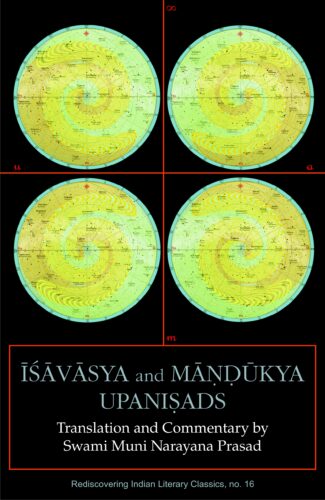
The book contains the original texts in Sanskrit, Roman transliteration and detailed commentaries on the Ishavasya and Mandukya Upanishads, explaining the basic message of the Upanishads Þ Brahmavidya or the science of the Absolute Þ in different ways, the questions asked in each being different.
The volume contains a detailed commentary on two important Upanishads, the Ishavasya and the Mandukya.
The Isha Upanishad states straightaway what Brahmavidya is. It clarifies three different paths in human life: two leading to final liberation and unconditioned happiness and the third leading to the demonic world of darkness and sufferings in life.
The Mandukya Upanishad, which is also the shortest Upanishad, states concisely what Vedanta basically teaches (Everything here indeed is Brahman), how everything is to be conceived, and how it is to be equated with aum. It explains how the monosyllable aum condenses within itself Brahman or atman, the substance in all the worlds.
The volume gives the original texts of the Upanishads in Sanskrit, their Roman transliteration and a commentary for each. It explains the basic message of the Upanishads Brahmavidya or Atmavidya or Vedanta or the science of the Absolute in different ways, the questions asked in each being different. It takes a fresh look at the Upanishads keeping in view all modern developments of thought in science as well as philosophy. The work will interest scholars and students of Hindu philosophy and religion.

Professor Filippi explores the Indian view of mortal existence from an individuals conception to his/her journey to the Kingdom of Yama with rare scientific objectivity by unveiling a complex network of sentiments, beliefs, scriptural references, customs, etc.
Prasnavali, a less-known yet important treatise, ascribed to Jadabharata, poses fifty-two fundamental questions on Monistic Philosophy. Novelty of this book lies in its question-answer technique provided for both teaching and propagation of Advaita Vedànta in an easy way. In spite of being small in size, the work covers almost all the important topics expected to be known by a devotee or a learner. There may be different groups of scholars and students of Vedanta affiliated to various mathas who long for finding proper answers to the queries that arise in this field from time to time. Jadabharata earnestly took up this uphill task through this treatise. Thus he deserves a special credit for creating interest in Advaitism among the people belonging to the community of both the learners and devotees.
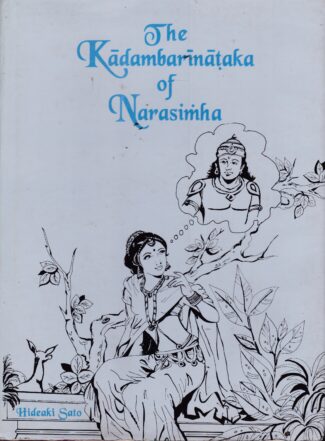
This is the first-ever English translation of Narasimhas Kadambarinataka and its critical evaluation. It highlights the plays importance in Sanskrit-Prakrt literature of medieval India and compares it with the kavyas of classicists like Sudraka.
It is the first ever English translation of Narasimhas Kadambarinataka. And also its first critical evaluation, highlighting not only its high importance in Sanskrit-Prakrit literature of medieval India, but also how this fourteenth-century play compares favourably with the masterly kavyas of the classicists like Sudraka, Kalidasa, Bhavabhuti and Rajashekhara.
Kadambarinataka is essentially a dramatic version of Kadambari : an internationally celebrated novel/romance of the seventh century, authored by the legendary Bana and his son. For over six centuries, it has remained unacknow-ledged and unnoticed owing to the prevailing prejudice against the whole range of Sanskrit-Prakrit literature that came to be written after the 10th century or so. Though the play saw its only printed edition in 1936, it was not studied in perspective nor has it so far been translated into any language. Dr. Hideaki Sato retrieves Kadambarinataka from the centuries of oblivion, offering this literary masterpiece, in two parts, to English-knowing audiences the world over. Part One, in the nature of a critical introduction, focusses on Narasimha: the author, his times and his writings; together with insightful analyses of his natakas sources, plot structure, language, style, innovative elements, and how far it has deviated from Banas Kadambari. Part Two comprises the English rendering of Kadambarinataka which, based directly on its two manuscripts available today, also carries extensive textual notes.
| × |
|
Amulets and Pendants in Ancient Maharashtra (3rd c. bc to 3rd c. ce) 1 x ₹198.00 |
| × |
|
Ancient Movements of Indo-Aryans and Indo-Aranians 1 x ₹585.00 |
| × |
|
Integration of Endogenous Cultural Dimension into Development 1 x ₹504.00 |
| × |
|
Recent Responses to the Philosophy of Wittgenstein 1 x ₹5,130.00 |
| × |
|
1000 Full Moons 1 x ₹625.00 |
| × |
|
Sri Brihaspati Vrata Katha 1 x ₹45.00 |
| × |
|
Why I Am an Indian and Other Essays 1 x ₹2,160.00 |